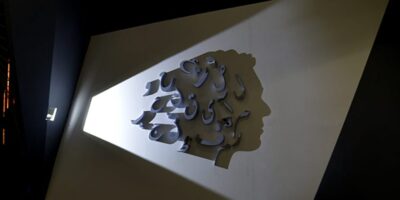You’ve probably seen the stunning and unique videos displayed on major world landmarks like the Empire State Building in New York and the Sydney Opera House. This technique, known as Video Projection Mapping, is truly one of the most mesmerizing and captivating video display techniques used globally. But projection mapping is more than just projecting a video onto a wall; it possesses an incredible ability to create animations and visuals that wrap around any surface, regardless of its bumps or protrusions, giving the audience a powerful sense of three-dimensionality.
Salso Projects challenges these boundaries: we prove that Video Projection Mapping can transform a simple 10-square-meter room into a compelling, immersive 3D world—exactly like the project we designed for the animation studio. If you’re curious about how we achieved such a stunning visual experience in a small, constrained space using this technique, and want to learn about the full details, applications, and industry challenges, don’t miss the rest of this comprehensive guide.

Table of contents:
- What is video projection mapping?
- What is the difference between 3D and 2D projection mapping?
- What is video projection mapping used for? Entertainment, advertising, or what?
- In what spaces can this project be implemented? A museum, café, or even a private room?
- What is the minimum and maximum space in which this project can be worked on?
- What materials are needed to build a 3D projection mapping?
- What videos can be played with this method?
- What is the hardest part of doing this project?
- Do you have to be at a specific angle to watch these videos or can they be seen from all sides?
- Can different videos be played with one setup without being repetitive?
- What software is used to design and implement mapping?
- How much does it cost to build?
- What affects the final price the most? Equipment? Content? Execution time?
- Who are the famous artists in this field?
- Where are the biggest video projection mapping projects done?
- I want to order a project but I don’t know where to start.
Warning: Undefined array key "cc_load_policy" in /home/salsodes/public_html/wp-content/plugins/elementor/includes/widgets/video.php on line 1253
What is video projection mapping?
In simple terms, it means displaying an image on a surface in a way that adapts to the characteristics of the destination location. When we talk about video projection mapping, we mean projecting a video onto a surface so that it takes on the structure and form of that surface. In commercial projects, the entire surface is usually covered with visuals of the product or brand, such as videos displayed on the facade of buildings. Contrary to what you might think, the hardware used isn’t much different from ordinary video projectors. The essence of the matter is that the video design must be tailored to the size and structure of the surface where the video mapping method is going to be used. For example, the design must ensure the video is properly viewed on all surfaces of a building and must correctly utilize the bumps and depressions so that the video can be seen well.

What is the difference between 3D and 2D projection mapping?
We use the term 3D to show that the image we are displaying appears three-dimensional, even though it isn’t truly 3D. In fact, we are simulating the third dimension. In some cases, “3D” refers to playing the video on a non-flat surface, which is why we use the term 3D projection mapping. This is seen on a large statue, for example, where the video is displayed on all its surfaces and the video changes state based on the different parts of the statue.
What is video projection mapping used for? Entertainment, advertising, or what?
The main feature of projection mapping is for lighting and visual effects, and it is most often used for this purpose. Beyond this, this technique provides diverse and attractive opportunities for the artist and designer to implement their ideas in the best way.
These designs can be used in various fields such as entertainment, decoration, and advertising. In the field of entertainment, projection mapping shows are one of the most captivating contents in the world in public spaces that also attract a large audience. Typically, municipalities, gallery owners, and festival organizers use this technique to attract and entertain audiences. In shows and concerts, video projection mapping is used alongside the main event, creating a visual spectacle that aligns with the rhythm of the music. In a way, the fantasy world created with video projection mapping is immersive and captivates the audience, taking them out of their current world.
This is especially true if it is accompanied by music and changes in temperature or environmental conditions. In advertising, projection mapping allows videos to be displayed in public spaces that are significantly different from normal videos. For example, an animated boy could be brought out of a wall holding a can of soda and advertising that product, or a shop window can be designed attractively with video mapping. In the field of decoration, this technique can also be used at a reasonable cost to create attractive permanent decor.
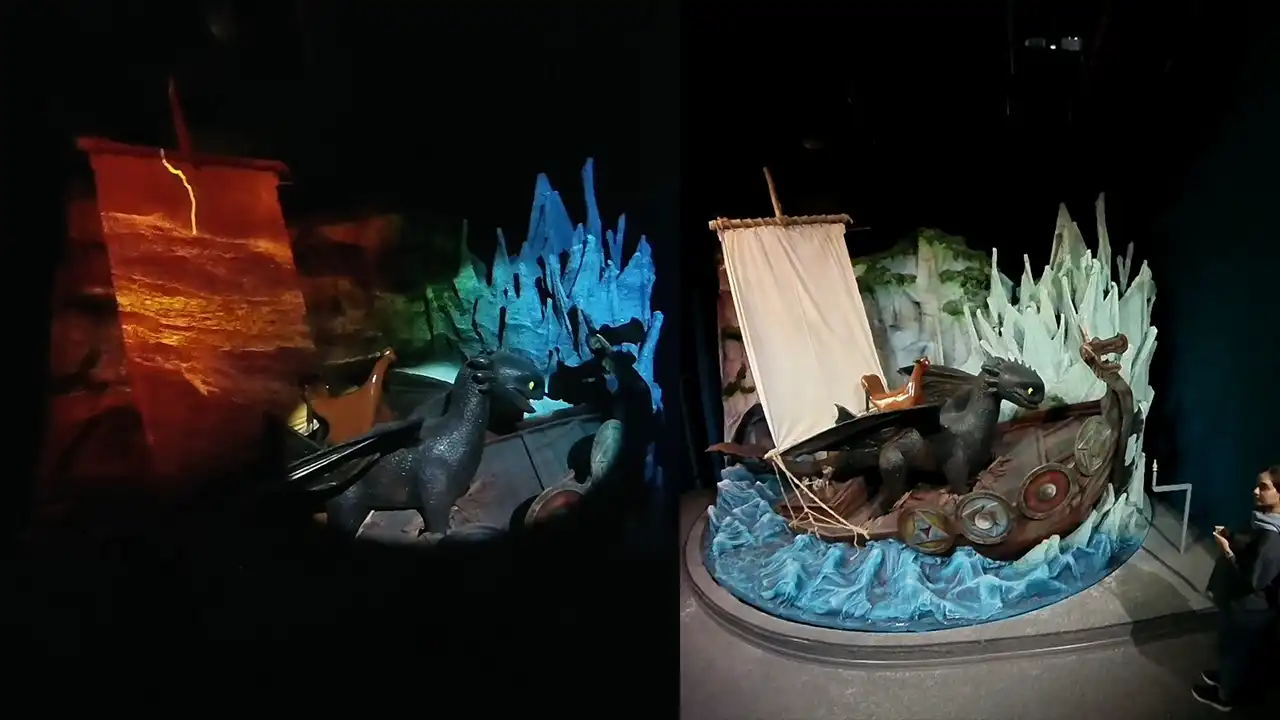
In what spaces can this project be implemented? A museum, café, or even a private room?
video projection mapping can be used in almost any space. For high-quality image display, we can use a video wall in bright spaces and a video projector mapping system in dark spaces. Therefore, there are virtually no restrictions on the implementation of the work. For example, an immersive video can be permanently displayed on the walls of a café, becoming part of that café’s decor.
This technique is also used extensively in museums. For example, in many museums, the video projection mapping technique is utilized to transmit information and create an engaging space for visitors. This technique can even be implemented with small projectors in a private room, but since designing these projects is difficult and expensive, it is not cost-effective for ordinary people to implement such a project for their personal space.
Warning: Undefined array key "cc_load_policy" in /home/salsodes/public_html/wp-content/plugins/elementor/includes/widgets/video.php on line 1253
What is the minimum and maximum space in which this project can be worked on?
There are almost no restrictions on the implementation of this technique; you can design the facade of skyscrapers with this technique. You can even design a product on a store shelf with a projector mapping system. With the help of microprojectors and macroprojectors, there are almost no restrictions on playing video on different surfaces. If the desired surface is flat, like a wall, you can do the work with one projector, but on multi-level surfaces, you have to use the help of several projectors. What is important is the main idea and design of the project: how to achieve the highest efficiency in the implementation of the project with the lowest cost. Our team in this field can advise you. Contact us.
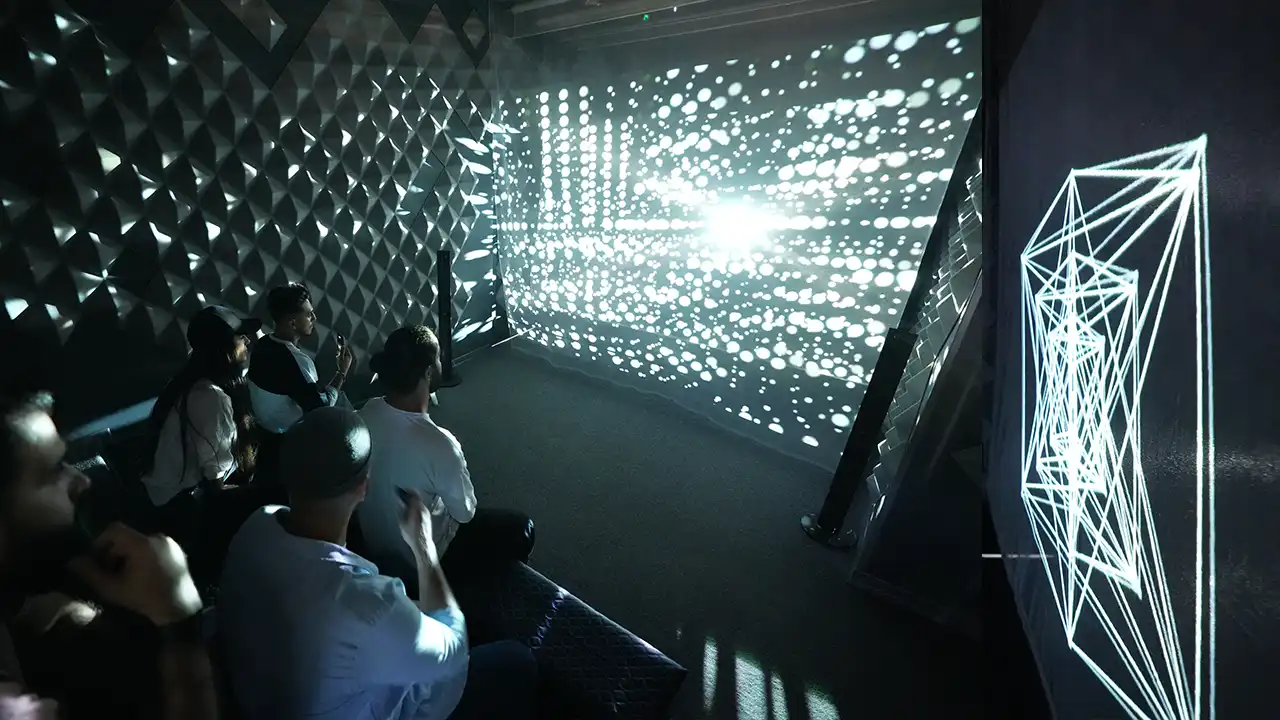
What materials are needed to build a 3D projection mapping?
The environment in which this display should be performed is very important. For example, if the project is displayed on the facade of a building, it must be designed based on the structure of that building, but in some cases, the surface on which the video is displayed is built for this purpose. In this situation, the artist and designer have more freedom and can present more diverse and attractive ideas and design the shape and structure of the display environment based on their needs.
For example, we designed and built the animation studio room for video mapping. This project is part of a larger project where the plan and overall structure were designed to resemble an animation designer’s room, and the show is actually a picture of animation design fantasies that are presented to the audience in an immersive way. We designed this project with a video projection in a ten-meter space, and the visitors of the show are extremely satisfied with the result.
Warning: Undefined array key "cc_load_policy" in /home/salsodes/public_html/wp-content/plugins/elementor/includes/widgets/video.php on line 1253
What videos can be played with this method?
We have almost no restrictions, and with the help of this technique, any video can be played with good quality on any surface. Of course, the more non-flat and larger the surface, the more complex the techniques we must use to play the video. In addition, videos, 3D images, animations, infographics, and any other images can be created based on the desired surface to see a more attractive output. In some cases, images can be made interactive at the same time as the playback. For example, changes can be made in the image in response to music or sound, or with the help of motion detection cameras, the images being played can change in response to the audience’s movement. This space that is created makes the audience feel like they are part of the project and interact more.
Warning: Undefined array key "cc_load_policy" in /home/salsodes/public_html/wp-content/plugins/elementor/includes/widgets/video.php on line 1253
What is the hardest part of doing this project?
Depending on the project model, the hardest part of the work may be different. For example, if the facade of the building that is going to be implemented using this method has a lot of depressions and protrusions, the hardest part of the work will be coordinating the light and image. Because the depressions and protrusions cause shadows to be created that, if not considered in the design, will affect the output of the work. In a way, it can be said that the larger the display size, the more difficult the task becomes because creating a quality image in a larger space requires a larger team and more expensive hardware. For example, consider that about 50 projectors are needed to cover a 100-meter building to display the image well. Naturally, coordinating and integrating the image of this many projectors is not an easy task. In immersive theaters, where the entire interior of a theater consists of a single image, multiple projectors must be used, which is also a complex and time-consuming task.
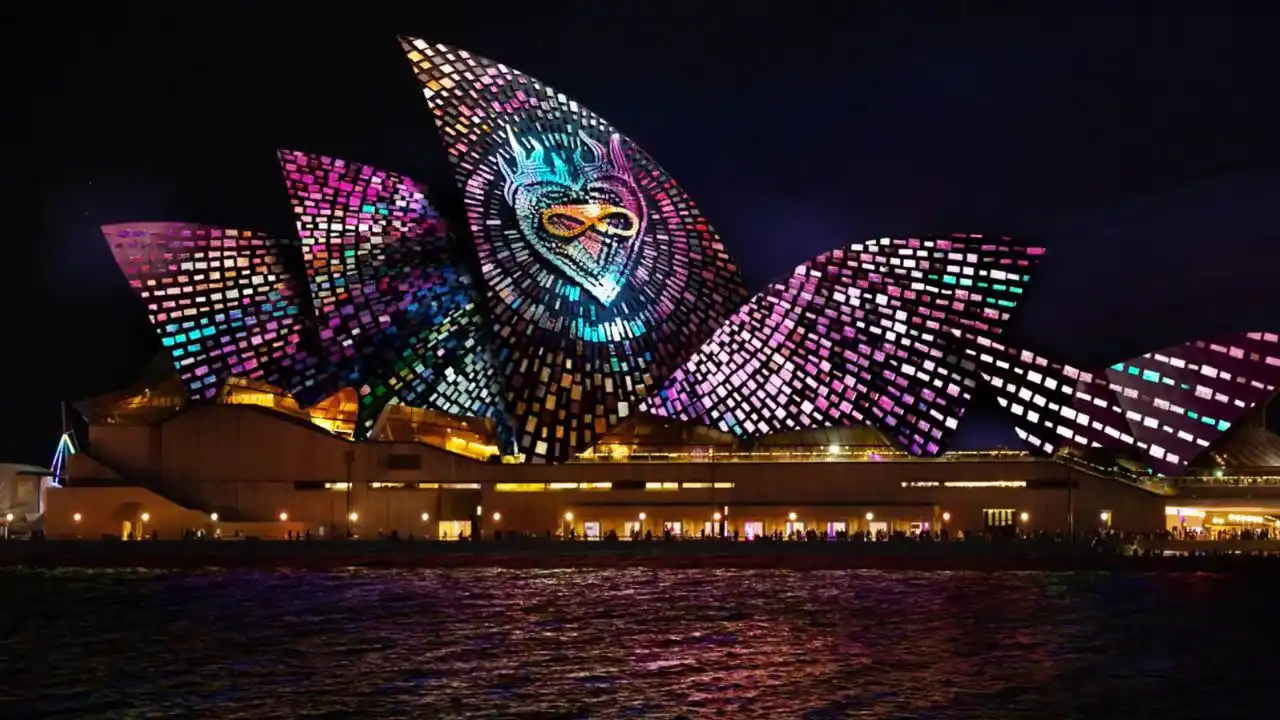
Do you have to be at a specific angle to watch these videos or can they be seen from all sides?
In the 3D anamorphic technique, you can design something so that the viewer sees the image in 3D from a specific angle. The technique we use in video projection mapping is similar to the 3D sticker technique, in that you have to be at the right angle to see the image well. The difference is that here the images are moving. Therefore, the audience’s viewing angle is very important, and the designer designs based on the audience’s viewing angle. The narrower the audience’s viewing angle, the more 3D sense can be shown to them. But if the audience’s viewing angle is wide and is located at multiple angles, 3D image rendering techniques should be minimized so that everyone can see an acceptable image at any angle. For example, in shows that are performed on buildings, squares, and statues, 3D space should be induced with the help of shadow and contrast techniques, and the 3D anamorphic technique cannot be used.
Warning: Undefined array key "cc_load_policy" in /home/salsodes/public_html/wp-content/plugins/elementor/includes/widgets/video.php on line 1253
Can different videos be played with one setup without being repetitive?
If the project hardware is placed in the right place and does not move, it can be used many times, and different videos can be shown. It is enough to design videos based on that location. For example, a projection can be installed on the wall of a café, and different videos can be shown at different times of the day or at different events. Of course, it should be considered that creating each new video adds additional costs to the project, depending on its complexity.
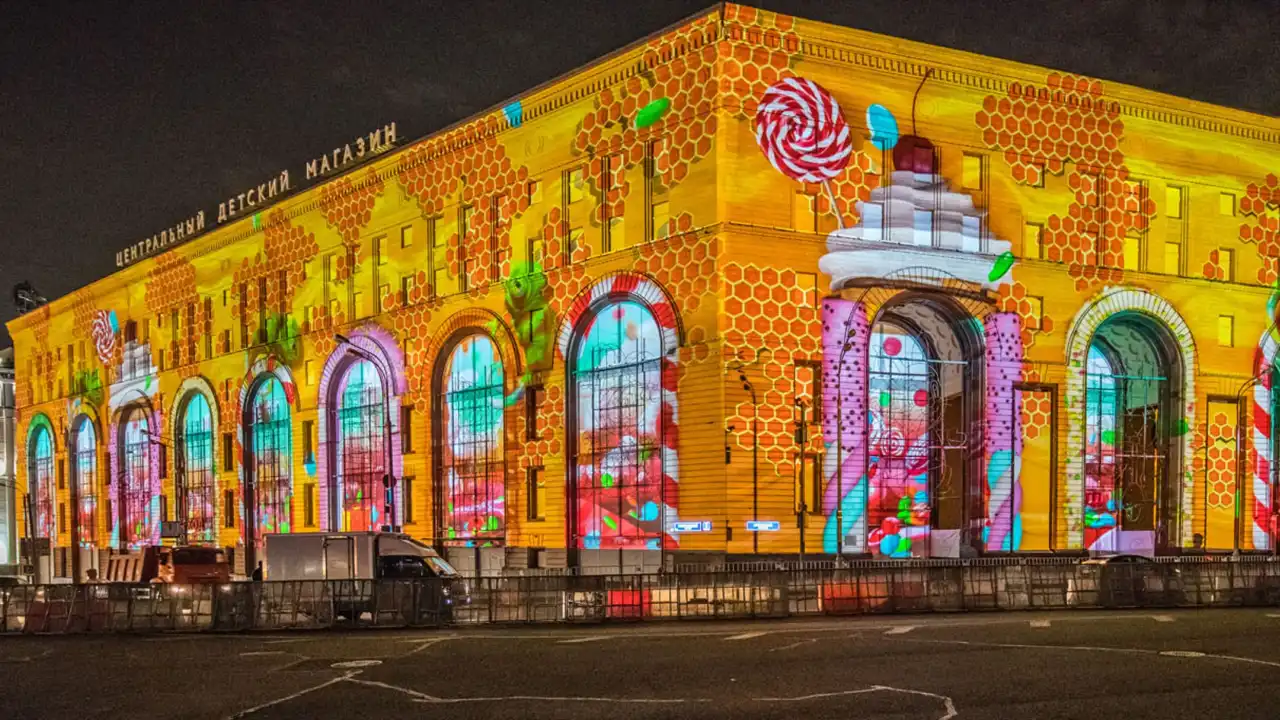
What software is used to design and implement mapping?
Video projection mapping is not dependent on specific software or hardware; it is an implementation technique. For example, you can even design an image suitable for the mapping projector with Photoshop. Depending on the type of use and operation, you can even use inexpensive projectors to create projection mapping.
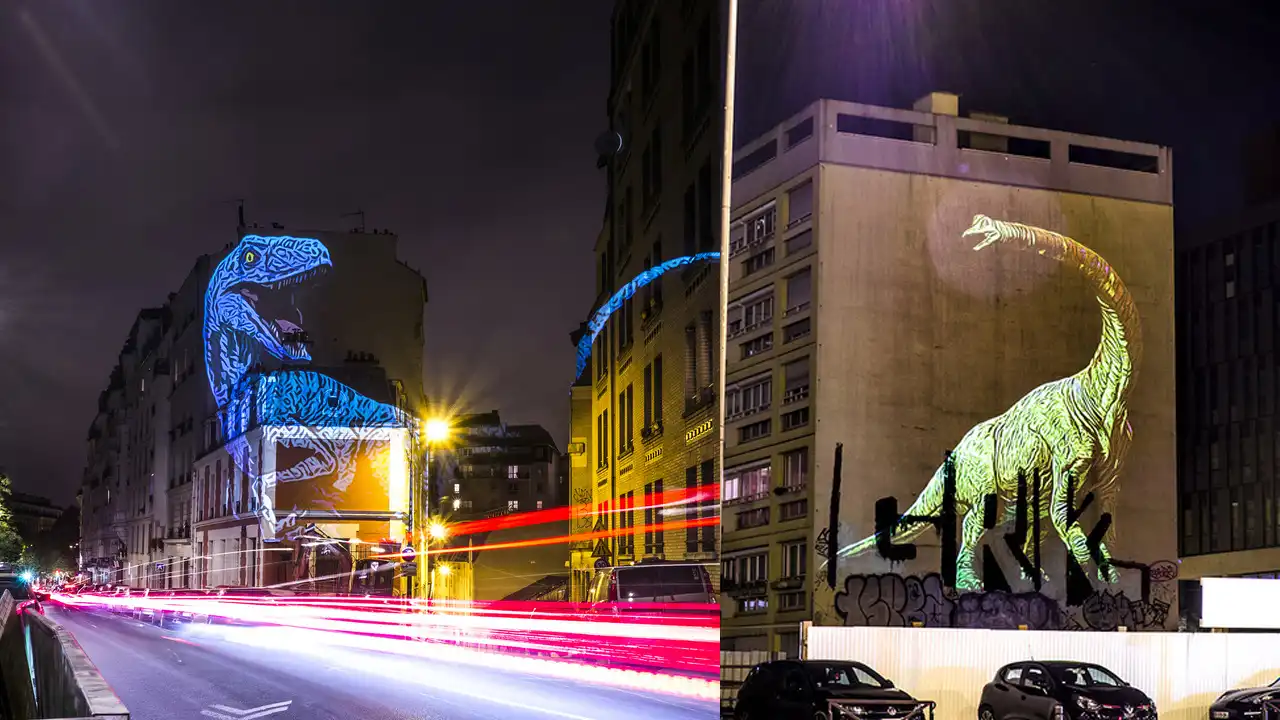
How is the Cost of a Projection Mapping Project Estimated?
Depending on the scale and desired quality of the work, the cost can vary widely. At Salso Projects, we focus on optimized budget management to deliver spectacular and attractive designs tailored to your needs. The following key factors have the most significant impact on the final project price:
Hardware (Equipment):
Number and Power of Projectors: This is the primary cost driver. Does the project require one projector (like our Taj Mahal mapping in the “Around the World” collection) or dozens for covering a 100-meter façade. Image Quality & Lumens: Brighter spaces or high-resolution requirements necessitate more powerful (and more expensive) professional projectors.
Content and 3D Design:
Customization: Does the content need to be custom-designed and animated specifically for the unique geometry of your space? (Fully custom content is the highest cost component.)
Interactivity: Adding interactive elements (like reacting to motion or sound) increases the software development costs.
Complexity of Execution:
The more complex the surface structure (many recesses and protrusions), the more time-consuming and expensive the calibration and alignment process becomes.
Where to Start? Budget and Estimation:
We can design an attractive project based on your budget, but to give you an accurate estimate, we need to know the scope.
Ready to Get Your Idea Priced? Before our consultation, you only need to prepare two things: 1) Your estimated project budget and 2) A photo or the dimensions of the space where the projection will be implemented.
[Request a Free Consultation for Accurate Cost Estimation]
Warning: Undefined array key "cc_load_policy" in /home/salsodes/public_html/wp-content/plugins/elementor/includes/widgets/video.php on line 1253

Who are the famous artists in this field?
Most large companies are active in this field, and artists prepare visual content. For example, Refik Anadol is one of the most famous 3D content designers who designs a surreal space. But the implementation of projects is mostly carried out by companies like us. Of course, given the experience and history we have in implementing anamorphic works, we have the ability to implement more attractively. This increases the final cost and quality of work.
Warning: Undefined array key "cc_load_policy" in /home/salsodes/public_html/wp-content/plugins/elementor/includes/widgets/video.php on line 1253
Some of the world’s most breathtaking projection mapping projects have lit up places like Tokyo’s Metropolitan Government Building, the cliffs of Qiddiya in Saudi Arabia, Dubai Festival City, Buda Castle in Budapest, and even the skylines of Shenzhen, China. These aren’t just light shows—they turn entire buildings, cliffs, and city blocks into living pieces of art. Through a mix of light, sound, and storytelling, they transform familiar landmarks into unforgettable visual experiences that draw millions of people from around the world.
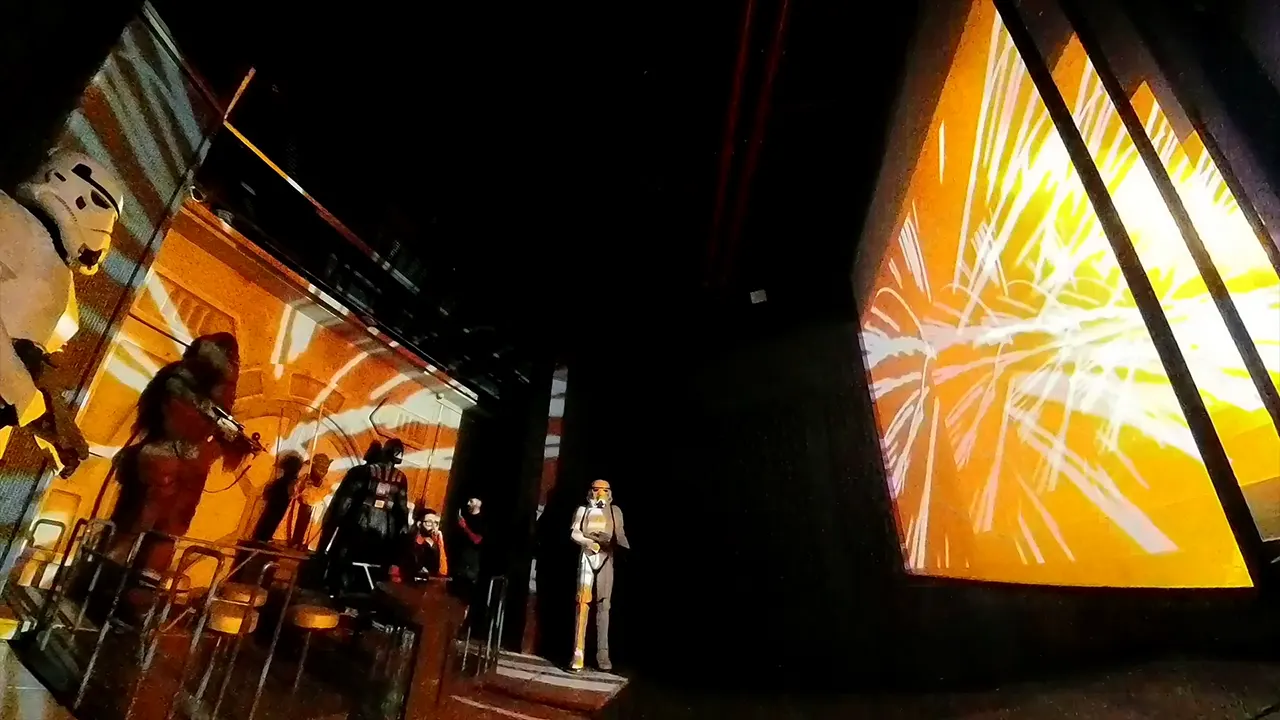
I Want to Order a Project, But I Don’t Know Where to Start!
If this article and our 10-square-meter case study have sparked your imagination, you are just one step away from having your own custom Projection Mapping project. At Salso, we simplify the process for you:
Define Your Goal: What is the space (café, museum, building façade, private room) and what is the purpose (advertising, décor, entertainment)?
Determine Your Budget: What is the minimum budget you have allocated for this project? (Knowing your range helps us offer the best and most optimal technical solution.)
We take the lead from here.
The expert team at Salso is ready to guide you from the initial concept to the final execution, transforming your space into a stunning, three-dimensional canvas.



